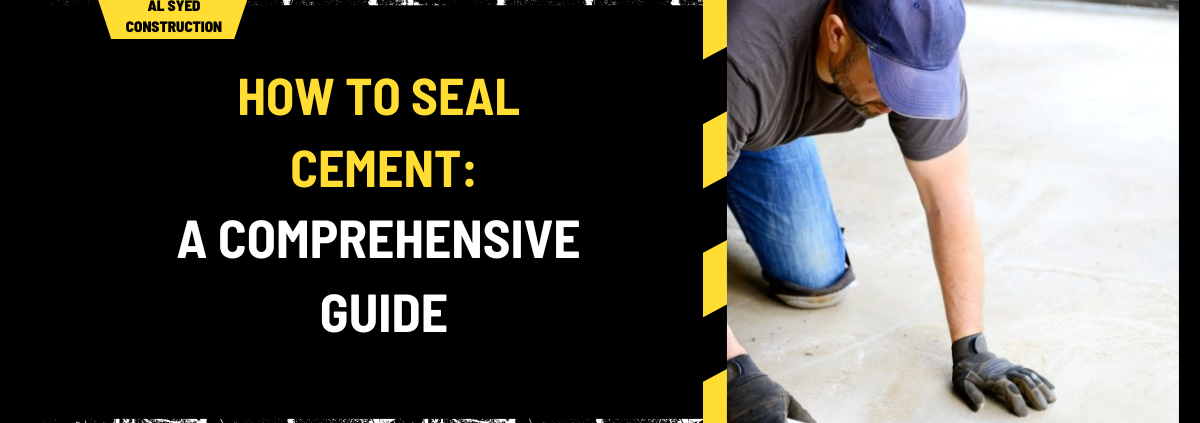How to Seal Cement: A Comprehensive Guide
Introduction
Sealing cement is a crucial maintenance step that enhances the durability, appearance, and longevity of various cement surfaces. Whether it’s for a driveway, patio, or indoor flooring, applying a sealant helps protect against moisture, stains, and wear. This detailed guide offers an in-depth look at how to properly seal cement surfaces, ensuring they remain in pristine condition for years to come.
Why Seal Cement?
Sealing cement provides a protective barrier against water, oil, and other contaminants. This process helps prevent staining, cracking, and deterioration caused by environmental factors. Sealing also enhances the visual appeal of cement surfaces, giving them a glossy finish and preventing discoloration.
Types of Cement Sealers
Understanding the different types of sealers available is essential for selecting the right one for your project:
- Acrylic Sealers: These are popular for their ease of application and affordability. They offer a moderate level of protection and a glossy finish. Acrylic sealers can be either water-based or solvent-based, each with its own benefits and drawbacks.
- Epoxy Sealers: Known for their high durability, epoxy sealers provide excellent protection against stains and abrasions. They are often used in industrial or high-traffic areas due to their robust nature.
- Polyurethane Sealers: These sealers offer superior protection and a high-gloss finish. They are highly resistant to chemicals, UV rays, and abrasions, making them ideal for both residential and commercial applications.
- Silane/Siloxane Sealers: These are penetrating sealers that work well for outdoor surfaces. They protect against water and salt damage without altering the appearance of the cement.
Preparation Before Sealing
Proper preparation is key to ensuring the effectiveness of the sealer. Follow these steps to prepare your cement surface:
1. Clean the Surface
Thoroughly clean the cement surface to remove dirt, debris, and stains. Use a broom or vacuum to remove loose particles, followed by washing with a pressure washer or a scrub brush and mild detergent. For stubborn stains, use a cleaning solution specifically designed for cement.
2. Repair Cracks and Imperfections
Inspect the surface for any cracks or imperfections. Use a cement crack filler or patching compound to repair these issues. Allow the repairs to dry completely before proceeding.
3. Allow the Surface to Dry
Ensure the cement is completely dry before applying any sealer. Moisture can prevent the sealer from adhering properly and reduce its effectiveness. Depending on weather conditions, drying can take from 24 to 48 hours.
4. Test the Surface
Before applying the sealer to the entire area, conduct a small test to check for any adverse reactions. Apply the sealer to a small, inconspicuous area and observe the results.
Applying the Sealer
1. Choose the Right Application Tool
Depending on the type of sealer and the size of the area, you can use a brush, roller, or sprayer. A roller is typically best for larger, flat surfaces, while a sprayer can cover large areas quickly and evenly.
2. Apply the Sealer
Follow the manufacturer’s instructions for application. Generally, you should apply the sealer in thin, even coats. Start in one corner and work your way across the surface, ensuring that each section is covered thoroughly.
3. Avoid Over-application
Applying too much sealer can lead to bubbling or uneven coverage. Apply the sealer in thin layers, allowing each coat to dry before applying additional layers if necessary.
4. Allow Proper Curing Time
After application, allow the sealer to cure properly. Curing time can vary depending on the type of sealer and environmental conditions. Avoid walking on or using the surface until it is fully cured to ensure optimal performance.
Maintenance of Sealed Cement
Regular maintenance helps extend the life of the sealer and the cement surface:
1. Clean Regularly
Regular cleaning with a mild detergent and water helps remove dirt and debris without damaging the sealer. Avoid using harsh chemicals or abrasive scrubbers that can degrade the sealant.
2. Reapply as Needed
Sealers wear out over time due to exposure to weather and foot traffic. Check the condition of the sealant annually and reapply as necessary to maintain protection.
3. Address Issues Promptly
If you notice any signs of wear or damage, such as peeling or discoloration, address these issues promptly to prevent further damage. Reapply or touch up the sealer as needed.
Conclusion
Sealing cement is a vital maintenance step that enhances the durability and appearance of your cement surfaces. By selecting the appropriate sealer, preparing the surface properly, and applying the sealer correctly, you can ensure that your cement remains protected and aesthetically pleasing for years to come.




